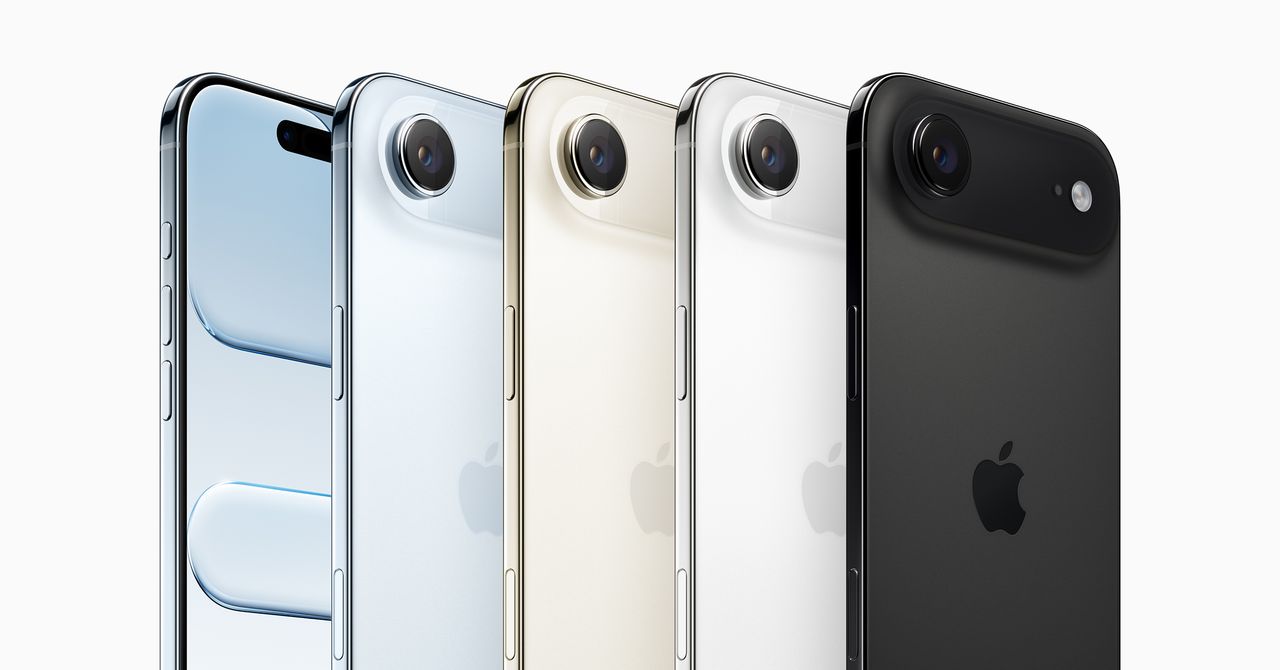
Apple has largely stuck with the same iPhone design since the iPhone 11 debuted in 2019, but change is afoot in Cupertino. While the iPhone 17 may resemble iPhones of the past few years, there’s an entirely new camera layout for the iPhone 17 Pro models. Also, there’s a brand-new iPhone! The iPhone Air replaces what was supposed to be the iPhone 17 Plus. It, too, features a new look, and it’s the thinnest iPhone Apple has ever made.
The changes on the standard iPhone 17—typically Apple’s most popular iPhone model—aren’t as drastic. The company announced the new handsets alongside new Apple Watches and AirPods Pro at its annual September event at the Steve Jobs Theater at Apple Park in Cupertino, California.
Preorders are available on Friday, with the iPhone 17 starting at $799, the iPhone Air costing $999, and the iPhone 17 Pro and Pro Max seeing an increase to $1,099 and $1,199. Here’s everything you need to know.
The iPhone Air
Apple’s iPhone Air is joining a slew of other phones that launched in 2025, which tout incredible thinness, like the Samsung Galaxy S25 Edge and the Honor Magic V5. It’s 5.6 mm thick—an incredible feat, as that’s even thinner than Samsung’s handset, and a 2.65 mm drop from the iPhone 16 Pro.

That’s about seven credit cards stacked on top of each other. With it comes weight savings of 24 grams compared with the regular iPhone 16, and this combo can dramatically alter how the phone feels in your hand, especially considering it sports a large 6.5-inch screen. It’s also the only iPhone this year employing titanium to help with the durability of the frame. Speaking of which, Apple says this phone uses its new Ceramic Shield 2 material on the front for 3x better scratch resistance and 4x better drop protection. The back glass uses the original Ceramic Shield glass mixture.
There’s still a camera bump, except it’s now horizontal (ahem, like a certain Google phone), but as you’ll see, there are compromises: You only get one camera. It can simulate a 2X optical zoom like most iPhones today, but unlike Samsung’s thin phone, there’s no ultrawide camera, making it less versatile for shutterbugs.
This phone debuts Apple’s C1X modem, which allows for sub-6 5G but no millimeter wave 5G, and it also features the first-ever Apple N1 wireless networking chip. The N1 has Wi-Fi 7, Bluetooth 6, and Thread support, which can improve local smart home controls with supported devices.
It still maintains features from previous iPhones, like the Dynamic Island, which takes up less space on the front, the Action Button, and Camera Control. The selfie camera has been upgraded to 24 megapixels and supports Apple’s Center Stage technology, which keeps you in the frame. The selfie camera has a square sensor, so you can take selfies in landscape or portrait orientation without having to switch the phone into landscape orientation. Apple has also added the ability to shoot videos with both the front and rear cameras at the same time.

The highlight of these phones is the telephoto camera, which now has a 48-megapixel sensor, matching the ultrawide and main camera. That bump in megapixel count means more detailed photographs, but it also debuts a new zoom level: 4X optical zoom. That is technically a downgrade from 5X optical zoom on prior Pro models, but Apple says this camera can achieve 8X optical-like zoom. You can now digital zoom up to 40X too.
We’ve seen phones with higher zoom before, like 10X optical zoom on Samsung’s Galaxy S23 Ultra. Google and Samsung’s flagships top out at 5X, and both can hit up to 100X zoom with AI enhancements.
Apple’s Pro models can now shoot in ProRes RAW, with a few new capabilities catered to filmmakers, like Genlock support. These phones are powered by the A19 Pro chip, but they have one extra GPU core over the A19 Pro in the iPhone Air. Apple says this A19 Pro is 40 percent faster than the A18 Pro on the iPhone 16 Pro. The latest Pro models also start with 256 GB of storage. They do not use Apple’s own modem, which means these devices support both types of 5G connectivity, but they do feature the N1 wireless networking chip.
The iPhone 17
The base model iPhone 17 resembles its predecessors, but there are some notable upgrades. Along with a slightly larger 6.3-inch screen to match the iPhone 17 Pro, Apple is finally bringing its ProMotion 120-Hz refresh rate to this model. It’s a feature that’s been available on Android phones for years (even ones as cheap as $300), and will make the iPhone screen appear smoother (while conserving battery), as the display itself will show 120 frames per second rather than 60 frames per second.



